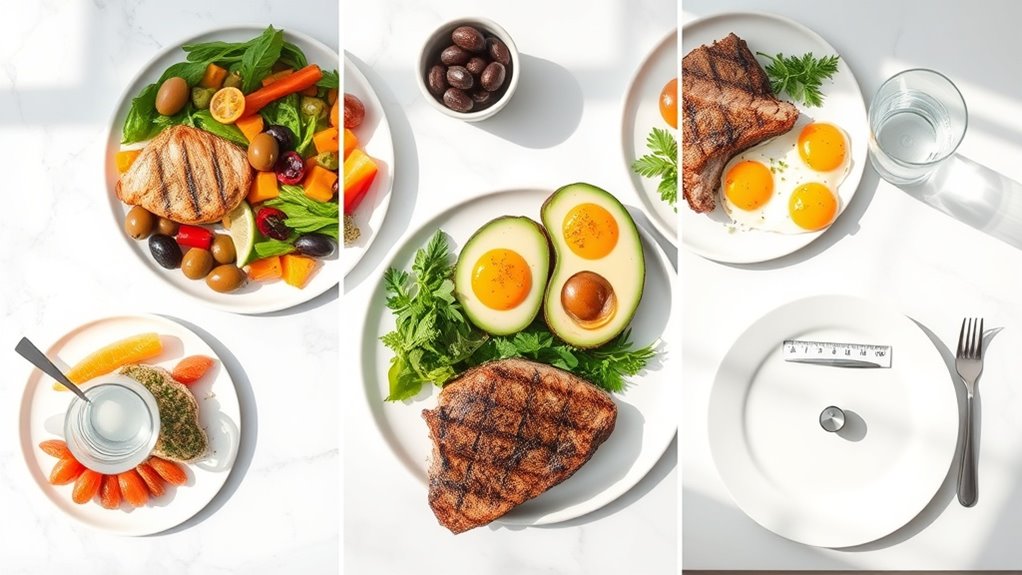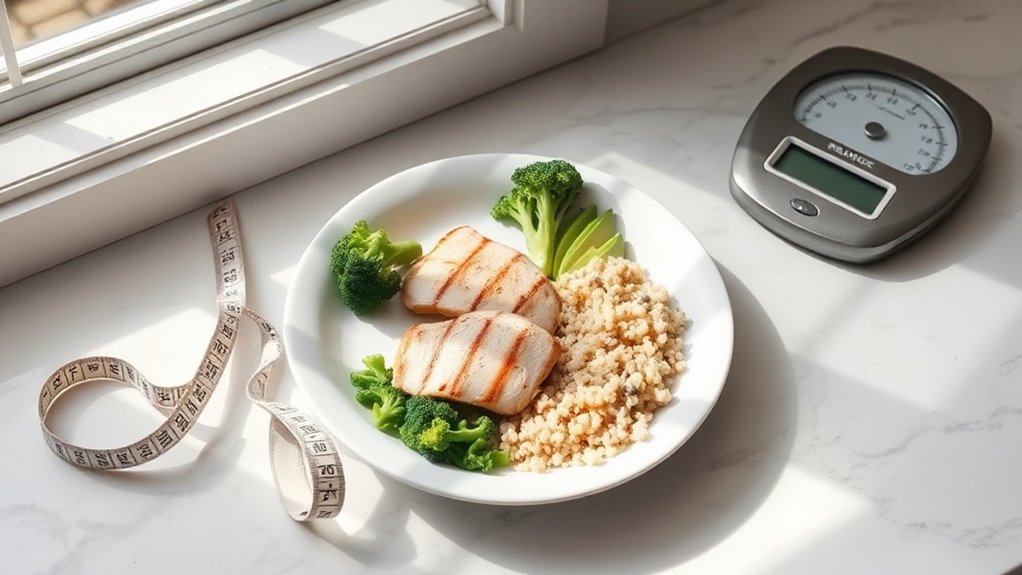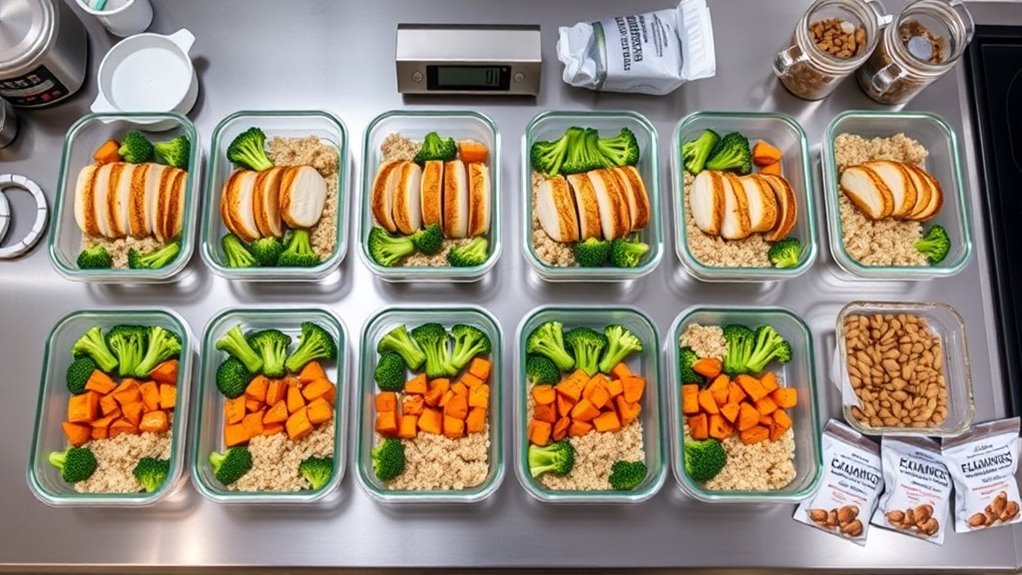Stop Starving Yourself! This Simple Trick Helps You Eat Less Without Feeling Hungry!
If you’re tired of feeling hungry while trying to eat less, there’s a more effective approach than just cutting calories. By mastering simple techniques, you can enjoy your meals without the constant struggle. It starts with being aware of your body’s signals and making a few adjustments to your eating habits. Curious about how these small changes can lead to significant results? Let’s explore some practical strategies that can transform your relationship with food.
Understanding Portion Control
Understanding portion control is key to eating less without feeling deprived. You can enjoy your meals while still being mindful of how much you eat.
One of the best portion control tips is to listen to your body. Pay attention to hunger cues and stop eating when you’re satisfied, not stuffed.
Another effective strategy is to use measuring cups or a food scale. This helps you see what appropriate serving sizes look like, making it easier to stick to your goals.
Don’t forget to fill your plate with fruits and veggies—they’re low in calories and high in volume, so you can eat more without guilt! Additionally, incorporating high-fiber snacks can promote longer satisfaction and help control appetite.
Lastly, try to savor each bite. Eating slowly allows you to appreciate your food, which can help you feel more fulfilled.
The Power of Smaller Plates
Have you ever noticed how the size of your plate can influence how much you eat? It’s a simple yet powerful trick: using smaller plates can help you feel satisfied with less food. When you fill a smaller plate, it gives the illusion of a full meal, tricking your brain into thinking you’re eating more. This can be especially helpful in social settings, where food often flows freely. Additionally, being mindful of your hunger signals can enhance the effectiveness of this trick, ensuring you recognize when you’re truly satisfied.
| Plate Size | Perception of Portion |
|---|---|
| 10-inch plate | Looks full with less |
| 9-inch plate | Satisfies visually |
| 8-inch plate | Encourages mindful bites |
| 7-inch plate | Great for snacks |
| 6-inch plate | Perfect for desserts |
Mindful Eating Techniques
While you might be tempted to rush through meals, practicing mindful eating can transform your relationship with food. Instead of multitasking or scrolling through your phone, take a moment to savor each bite.
Sit down at the table, breathe deeply, and appreciate the colors and aromas of your meal. This simple shift helps you connect with your food and enhances your experience.
Try to chew slowly and notice the flavors developing on your palate. Pause between bites to reflect on how you feel. Are you still hungry, or are you satisfied?
Engaging your senses not only makes meals more enjoyable but also helps prevent overeating. Incorporating foods like Greek Yogurt can further support your fullness and satisfaction during meals.
The Role of Protein in Satiety
Protein plays a crucial role in keeping you feeling full, as it takes longer to digest compared to carbohydrates and fats. When you include protein in your meals, you’re not just satisfying your hunger; you’re also nurturing your body.
Foods rich in protein, like chicken, beans, and Greek yogurt, help stabilize your blood sugar levels, which can prevent those annoying hunger pangs that often lead to snacking.
Plus, protein influences hormones that signal fullness, giving you a sense of satiety that can last hours. Imagine sharing a delicious protein-packed meal with friends or family, enjoying the flavors while feeling satisfied together. Additionally, incorporating high-protein foods like Greek yogurt into your diet can significantly enhance your weight loss journey.
Recognizing Hunger Cues
Understanding your hunger cues is just as important as what you eat. Being in tune with your body helps you make better choices and fosters a sense of belonging in your health journey. Here’s a quick guide to help you recognize your hunger signals:
| Hunger Level | Description |
|---|---|
| 1 – Starving | You’re very irritable and weak. |
| 2 – Hungry | You feel a slight growl in your stomach. |
| 3 – Satisfied | You’ve had enough, but could snack. |
| 4 – Full | You feel comfortably full and content. |
When you learn to listen to these cues, you can enjoy meals without overindulging. Additionally, keeping a food journal can significantly enhance your awareness of these hunger cues. Remember, you’re not alone in this; many are navigating similar paths. Trust your instincts, and let your body guide you toward a healthier relationship with food.
Tips for Sustainable Eating Habits
As you seek to eat less without feeling deprived, developing sustainable eating habits can make all the difference. Start by embracing whole foods like fruits, veggies, and whole grains. These nutrient-dense options keep you satisfied longer, helping you avoid mindless snacking.
Next, practice mindful eating. Slow down, savor each bite, and pay attention to your hunger cues. This helps you enjoy your meals and recognize when you’re full.
Don’t forget to stay hydrated! Sometimes, thirst masquerades as hunger. Keep a water bottle handy to sip throughout the day. Increased water intake can help curb hunger and reduce cravings, making it easier to stick to your eating goals.
Lastly, find a supportive community. Share your goals with friends or join a group that encourages healthy habits. You’ll feel more motivated and less alone on your journey.





